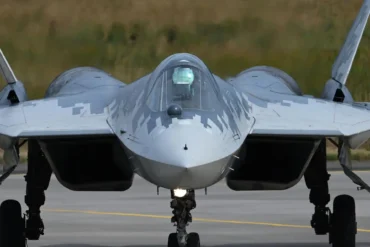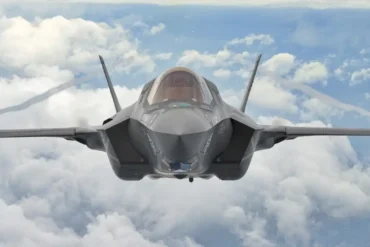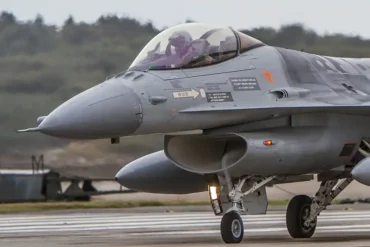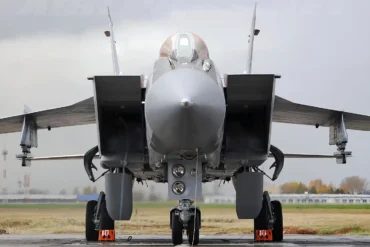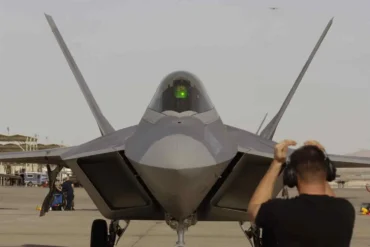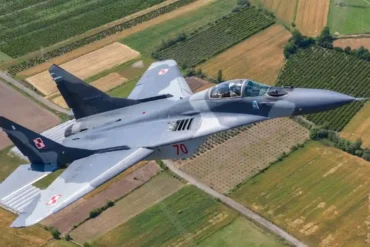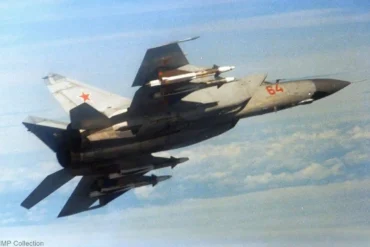The MiG-29, one of the most advanced and versatile fighters in the world, is known for its high-performance capabilities. Among the aircraft’s numerous technical features, its intake doors play a critical role in maintaining optimal engine performance. The sophisticated design of these intake doors ensures that the aircraft can operate effectively across a variety of conditions, from take-off to landing, at both high and low speeds. This article delves into the intricate functionality and importance of the MiG-29 intake doors, providing an in-depth understanding of their design and operation.
Overview of the MiG-29’s Air Intake System
The MiG-29’s air intake system is engineered to provide the engines with a steady supply of air, even in extreme operational conditions. These intakes are a crucial part of the aircraft’s performance, as they ensure the engine operates efficiently while preventing foreign object damage (FOD) and maintaining airflow stability.
The intake doors are designed to manage the flow of air into the engines depending on the speed, altitude, and status of the aircraft. They are equipped with automatic control systems that adjust their position based on these variables. The primary goal is to protect the engines from ingesting debris, regulate airflow, and optimize performance during both high-speed flight and slower maneuvers like take-off and landing.
How the MiG-29 Intake Doors Work: A Speed-Dependent System
The MiG-29 intake doors operate with a speed-dependent automatic control mechanism. This means that the intake doors adjust their positions based on the aircraft’s speed, which helps optimize airflow into the engines.
- At speeds below 200 km/h, the main intake doors remain closed, while the auxiliary intake doors open. This configuration ensures that the aircraft can still draw sufficient air into the engines, even at low speeds. The auxiliary intakes, which are located on the top of the aircraft’s wings, provide a reliable air supply for engine operation during take-off and at low speeds, preventing any airflow deficiencies that could hinder engine performance.
- As the aircraft accelerates past 200 km/h, the main intake doors automatically open, allowing for a more efficient and high-flow air intake necessary for maintaining full engine power at higher speeds. Simultaneously, the auxiliary intake doors close, reducing drag and improving the aircraft’s aerodynamic efficiency.
This automatic system ensures that the MiG-29 can operate at a wide range of speeds without requiring the pilot to manually adjust the intake doors. The aircraft’s onboard control systems take care of these adjustments, optimizing engine performance based on the dynamic conditions of flight.
Intake Doors and Foreign Object Damage (FOD) Protection
One of the unique features of the MiG-29’s intake doors is their ability to prevent foreign object damage (FOD). FOD is a significant risk for any aircraft, particularly during take-off and landing, when the engine intakes are at their most vulnerable.
To mitigate this risk, the MiG-29 is equipped with auxiliary intakes positioned at the top of the wings. These intakes are designed to provide an air supply to the engines while protecting them from the ingestion of debris that might be present on the runway or in the vicinity of the aircraft. The auxiliary intakes are particularly useful at low speeds, where the main intake doors are closed and the aircraft could be at greater risk of ingesting foreign objects.
This design ensures that the aircraft can continue to operate even in adverse conditions, such as take-offs from unprepared or contaminated airfields, without compromising the engine’s safety or efficiency.
Automatic Control of Intake Doors During Take-Off and Landing
The MiG-29’s intake doors function with a high level of automation, ensuring smooth transitions during both take-off and landing phases. When the aircraft is preparing to take off, the intake doors are automatically adjusted based on the aircraft’s speed and the status of other key systems.
Take-Off Procedure
During engine start-up, the FOD protection doors close automatically to prevent any debris from entering the engine during the initial phases of power-up. The doors remain closed until the aircraft reaches an airspeed of approximately 200 km/h. At this point, the system automatically opens the main intake doors, allowing for maximum airflow into the engines as the aircraft accelerates for takeoff.
- The transition from auxiliary to main intake doors happens seamlessly, ensuring that the aircraft does not experience any drops in engine power or thrust during the critical moments of take-off. The hydraulic system that controls the intake doors ensures reliable operation under the high-stress conditions of engine startup and rapid acceleration.
Landing Procedure
After the aircraft has completed its mission and is returning for landing, the intake doors behave differently depending on the aircraft’s speed.
- When the aircraft drops below 200 km/h during the landing roll, the main intake doors close automatically, and the air intake ramp panel doors engage. This helps to optimize aerodynamics and reduce drag while also protecting the engines from the ingestion of debris that may be present on the runway.
- The automatic closure of the intake doors helps minimize the risk of foreign objects entering the engines during the landing phase, especially in high-traffic environments or when operating from airfields with less-than-ideal conditions.
Pressure Equalization Mechanism for Closed Intakes
In addition to their speed-dependent functionality, the MiG-29’s intake doors are also equipped with a pressure equalization system that helps manage airflow and pressure within the intake system. The pressure equalization mechanism includes three pressure equalization valves in the lower air intake lids.
These valves are crucial in preventing underpressure when the intake doors are closed, which could otherwise lead to engine performance issues or damage. When the main intake doors are closed at lower speeds, these valves allow air to flow into the intake system at a regulated rate, maintaining stable pressure levels and ensuring the engines do not experience adverse effects from insufficient airflow.
This system is an example of the MiG-29’s advanced engineering, providing additional protection and optimizing the performance of the intake system even under less-than-ideal conditions.
The Role of the Intake Doors in the Overall Design of the MiG-29
The MiG-29 intake doors are not just critical for engine performance—they are also an essential part of the overall design philosophy that makes the MiG-29 such a highly capable and versatile fighter jet.
- The automatic control of the intake doors allows the aircraft to operate effectively across a wide range of conditions without requiring manual intervention from the pilot.
- The integration of auxiliary intakes and FOD protection systems ensures that the aircraft can perform reliably in high-risk environments, such as during take-offs and landings on unprepared or damaged airstrips.
- The pressure equalization system further adds to the robustness of the intake system, maintaining engine performance even when the main intake doors are closed.
These features contribute to the MiG-29’s reputation as a highly advanced, reliable, and versatile fighter aircraft. By intelligently managing the airflow to the engines through its intake door systems, the MiG-29 ensures optimal performance during both combat and non-combat operations, making it a formidable presence in any air force.
Conclusion
The MiG-29 intake doors represent a sophisticated piece of engineering that plays a vital role in ensuring the aircraft operates efficiently and safely under a wide range of conditions. Through their speed-dependent automatic operation, FOD protection systems, and pressure equalization mechanisms, the intake doors contribute to the overall performance and versatility of the MiG-29. Whether in the high-speed maneuvering of combat or the critical phases of take-off and landing, the intake doors help protect the engines and ensure the aircraft remains in peak operational condition, ready to face any challenge.

